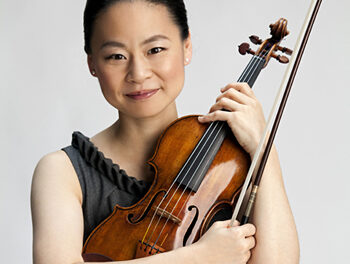In the Christian liturgical calendar, the Sunday before Easter is known as the “Sunday of the Passion,” although older generations may still refer to it by its older title (often still used in tandem with the new) of “Palm Sunday.” It marks the beginning of Holy Week, when the events of Jesus’ arrest, trial, and crucifixion are recounted. For many centuries, composers have wrestled with how best to portray the drama of what is called the “Passion of Christ” in music. In setting this drama in the Biblical words of St. Luke, Scottish composer James MacMillan has created another milestone on the path trod by composers such as Heinrich Schütz (1666) and Krzysztof Penderecki (1996). Those composers, in their turn, had built on the musical narratives by the composers of mediaeval plainsong. (Note that J.S. Bach, whose settings of the Passion accounts by St. John and St. Matthew remain towering monuments of musical history, did not write a “St. Luke Passion” that survived him; the current score published under that title is apocryphal.)
MacMillan’s music breaks the mold of previous Passion settings. There are no subjective elements here: no arias commenting on the text, no hymns representing a congregation’s thoughts, no melodies which remain in a listener’s head after the performance. Nothing is here save the Evangelist’s account: Chapters 22 and 23 of the book of Luke, preceded and followed by other Lucan passages which MacMillan uses like the right-hand and left-hand parts of a triptych altar-piece. The opening “Prelude” quotes texts of the Annunciation, viewing the Passion through the Marian lens of MacMillan’s own Roman Catholicism; the “Postlude” takes words from Luke’s “Acts of the Apostles,” recounting Jesus’ ascension into heaven.
The narrative portions are not sung by a solo voice, but by the chorus. The words of Jesus are not sung by a soloist, but by children’s voices (their innocence, according to Jeremy Begbie, Director of Duke Initiatives in Theology and the Arts, represents Jesus as the innocent sufferer portrayed in Luke’s Gospel).
The music is the drama. Between the impassioned “Maria!” cries of the Prelude and the single, wordless sound of the children’s voices fading into silence which closes the work, there are moments punctuated by the roar of the full organ and 41-piece orchestra and other moments of serenity, most frequently when Jesus’ words are being sung.
In this performance, the first in the USA (following the world premiere, less than a month ago, in Amsterdam), conductor Rodney Wynkoop led the combined forces of the 89-voice Duke Chapel Choir, the 42-member Orchestra Pro Cantores, the 23-voice Durham Children’s Choir (Scott Hill, director) and the 22 young women of the Riverside High School Sirens (Jill Boliek, director; the group was named a top youth chorus in 2010). Wynkoop’s sure and certain direction produced a stellar performance which could have been improved only with better diction from the soprano and alto sections of the chorus. (While this could have been a function of the reverberant acoustic of Duke Chapel, the tenors and basses’ diction was uniformly excellent from my seat in the second third of the nave.) Of particular note was the role played by the Aeolian organ, with Interim Duke Chapel Organist Robert Horton* at the console. From quiet colors to blazing fortissimos, Horton’s registrations showed why it was a wise decision to re-build this instrument rather than replace it.
This article is not the venue for a musical analysis, but rather for reflection on the event. Moments which were particularly striking included the orchestral violence portraying the anger of the council which accuses Jesus of blasphemy (the end of Luke: 22); the threnody of Jesus’ words, “Daughters of Jerusalem, do not weep for me, but weep for yourselves and for your children” and the immediately-following verses; the theological commentary when words of the repentant thief on the cross are heard in the same manner as Jesus’ words have been heard up to that point (when the thief repents, he has taken on the spirit of Christ in his words); the melody of Herzlich thut mich Verlangen, the “Passion Chorale” so often quoted by Bach in his St. Matthew Passion, thundering through the irrational noise of the necessary evil of the crucifixion; and the unspoken “Lo, I am with you always” of the work’s final note disappearing into the high vaulting of the Gothic nave.
MacMillan feels this drama within himself; he portrays it in his musical language in a way that penetrates veils of time, pietism, and/or distance to make Luke’s account come alive.
A debt is owed to those who commissioned and supported this work and its performance**; to Duke Chapel and Duke Initiatives in Theology and the Arts, Duke Divinity School; and to Rodney Wynkoop, who brought to life for the first time in this country this significant score; and to composer James MacMillan, whose vision reached across the ocean, on this day, to the benefit not only of Duke University but also of the city of Durham and the world of music.
*”Horton has been the Director of Music at St. Mark’s Episcopal Church in Evanston, Ill., since 2008, and has a doctoral degree in organ performance from the University of Kansas.”
**The St. Luke Passion was commissioned by Soli Deo Gloria, of Glen Ellyn, Ill., Amsterdam’s Royal Concertgebouw Orchestra, Duke University, the City of Birmingham (England) Symphony Orchestra, and the Britten Sinfonia, which will give the work its UK premiere next year.











